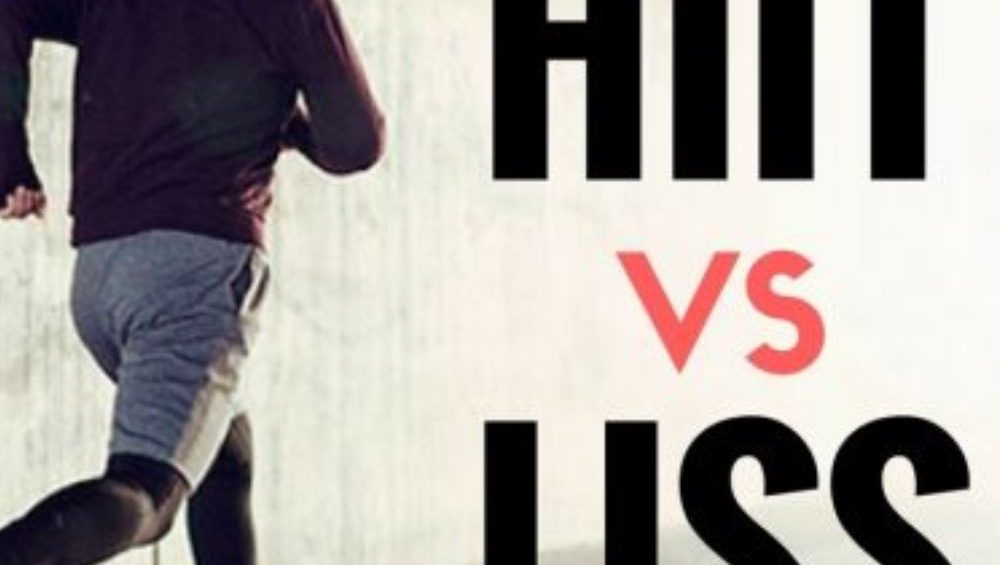Have you ever wondered if the cardio exercises you’re doing are really the best way to reach your goals? Whether your goal is to lose weight or get fit, cardio is an essential component to your workout program. You know that cardio is where you burn the most calories at one time.
There are two very different types of cardiovascular exercise available – HIIT and LISS cardio. HIIT stands for High-Intensity Interval Training, and LISS stands for Low-Intensity Steady State training

HIIT stands for High intensity interval training, which consists of short sprint intervals coupled with low-moderate intensity work. An example of this would be a 30 second sprint followed by a 4 minute steady pace walk to cool down and bring your heart rate back to normal and then repeating it. LISS stands for Low intensity steady state cardio, which consists of purely low-moderate intensity work. An example of this would be walking on the treadmill or riding the bike and being able to hold a conversation
Each cardio type, both HIIT and LISS, provides very different benefits and results.
There are 2 ways that muscle can burn glucose (blood sugars) and that is through aerobic work (with air) and anaerobic work (without air). For example, long bouts of LISS cardio is considered aerobic work and weight training or HIIT cardio can be classified as anaerobic work. HIIT produces better changes in exercise capacity as opposed to LISS cardio. High intensity training will hit the AT(anaerobic) and LT(aerobic), that’s what causes the body to make metabolic changes.
Metabolism
The more mitochondria you have and the more active they are the greater oxidative capacity you will have for fat loss. HIIT increases mitochondrial capacity and you actually increase the amount of mitochondria you produce Studies show that you get greater fat loss through high intensity training because of the increase in oxidative capacity. Whereas with LISS you’re only burning calories at that precise moment, there’s no 24 hour energy expenditure (boost in metabolism) and it hurts you down the line because your body adjusts to it and you end up needing more to lose fat.
There are a few reasons why HIIT is the superior fat-loss exercise method. First, your body has to work harder to produce the adenosine triphosphate (ATP) your muscles need for energy, leading you to burn more calories during your workout.
Second, once your workout is over, your body will continue burning calories as it cools down. This is known as excess post-exercise oxygen consumption (EPOC), or the afterburn effect.
And finally, HIIT tends to break down more lean muscle tissue, which then needs to be built back up. As a result, your body will require more energy to help your muscle tissues recover and rebuild.
Research
A study conducted by Wilson et al. From the University of Tampa, FL, shows when you add in LISS you get a temporary boost in weight loss. Subjects lost a couple of pounds the first week and after that they lost nothing. This happened because their metabolism completely adjusted to that and that became their new set point to what they had to do just to maintain. LISS with a low calorie diet is terrible for fat loss and could cause muscle loss. During a low calorie diet, LISS cardio is more catabolic (muscle wasting) towards muscle as opposed to HIIT cardio being much more muscle sparing.
Who Should Try HIIT?
- You’re an experienced exerciser comfortable with high-intensity exercise.
- You want to focus on losing weight and burning more calories both during and after your workouts.
- You want shorter workouts because of a busy lifestyle.
- You want workouts that mix up different exercises and intensities to keep things interesting.
- You want to build endurance quickly.
Who Should Stick With Steady State?
- Beginners or anyone coming back from a long exercise break.
- Anyone who can’t do high-impact exercise or doesn’t like working at very high intensities.
- Someone training for an endurance race, such as a half-marathon or marathon, although you may do some high-intensity work depending on the training plan you’re following.
- Anyone who’s been told to avoid high-intensity exercise by a doctor.
In Conclusion, With all that in mind, which one is right for you? The answer really depends on your fitness level and goals more than anything else. And keep in mind that experts don’t recommend doing HIIT more than twice to three times a week. Do the type of cardio that you have a personal preference for. Whichever one fires you up the most because you’ll most likely work harder at it. HIIT is quicker, proves to be more effective for fat loss, creates metabolic changes, and helps with muscle retention but not everybody can do HIIT. LISS is safer, but takes twice as long to accomplish similar things and it still has its place for fat loss in moderate amounts, from a pure calorie burning standpoint, the decision is solely up to you.
Train Smart.







